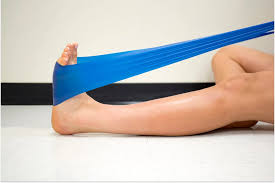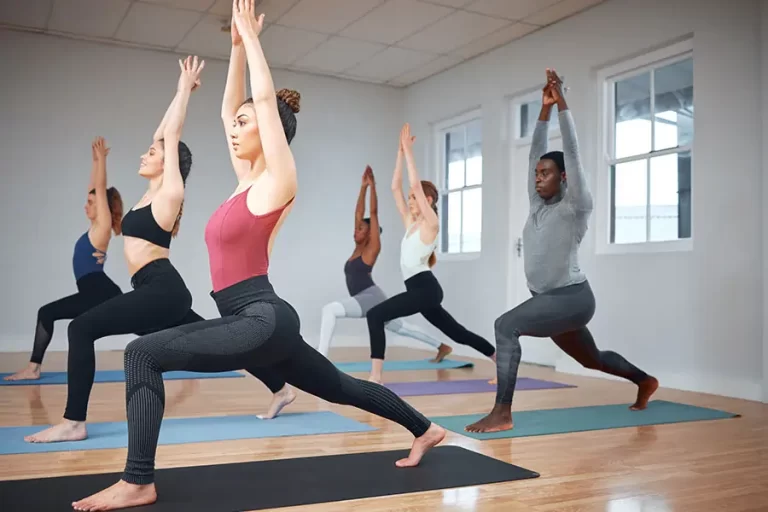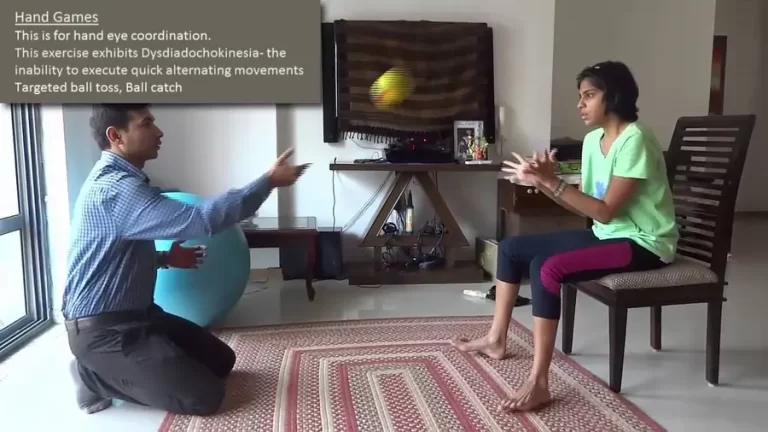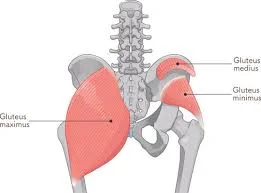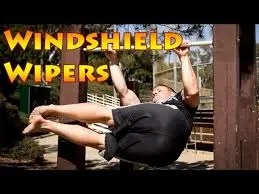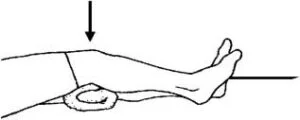Ankle Mobility Exercises at Home
Ankle mobility exercises at home are simple yet effective movements designed to improve the range of motion, flexibility, and function of your ankles. These exercises help enhance balance, reduce stiffness, and prevent injuries, making them ideal for daily practice without the need for special equipment.
What is Ankle Mobility?
Ankle exercises and stretching can increase your strength and mobility if your ankles are weak or if you want to improve your athletic performance.
It will help you avoid accidents if you incorporate ankle strengthening and stretching into your regular regimen. Three to five days a week, incorporate these twelve ankle workouts into your program.
Best At-Home Ankle Mobility Exercises
Ankle Mobility Exercises:
Ankle circles:
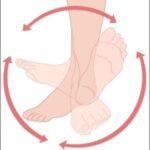
A simple mobility exercise that increases ankle joint flexibility and range of motion is the ankle circle. One foot is raised off the ground, and the ankle is gently rotated in a circle, first in one direction and then the other.
Ankle circles are frequently utilized in warm-up exercises, injury recovery, and joint health maintenance, particularly for people recuperating from lower limb injuries or those who spend a lot of time sitting down.
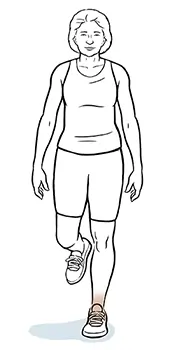
Single leg balance:
A straightforward yet powerful technique to increase lower body strength, stability, and balance is the single-leg balance exercise. The exercise involves standing up straight and balancing on the other leg while gradually raising one foot off the ground.
To improve coordination and reduce the risk of falls, this exercise works the muscles in the ankles, calves, thighs, and core. Athletes, senior citizens, and everyone else wishing to enhance their general posture and balance would particularly benefit from it.
Standing heel lifts:
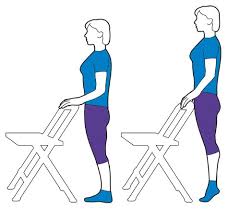
A simple exercise that strengthens the calves and enhances ankle stability and balance is the standing heel raise. In addition to strengthening the calf muscles, this exercise can improve circulation in the lower limbs. It is appropriate for people of all fitness levels and is frequently used in strength training regimens, warm-ups, and rehabilitation exercises.
Ankle plantar flexion:
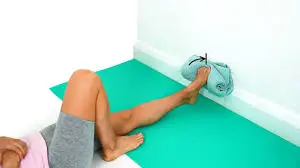
Ankle plantar flexion is a targeted exercise that strengthens the muscles responsible for pointing the toes downward, particularly the calf muscles. To perform this movement, sit on the floor or a chair with your legs extended, and slowly push your toes away from your body as if pressing down on a gas pedal.
This exercise can also be done using resistance bands for added challenge. Ankle plantar flexion helps improve ankle stability, supports better movement mechanics, and is commonly used in rehabilitation and injury prevention programs.
Ankle dorsiflexion:
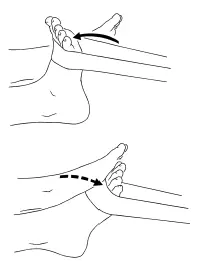
Ankle dorsiflexion is an exercise that includes raising the foot upward toward the shin and works the muscles on the front of the lower leg, especially the tibialis anterior. This exercise involves maintaining your heels on the floor while gently raising your toes while sitting with your legs extended or standing with your feet flat on the floor.
This exercise is frequently used in rehabilitation settings to resolve imbalances or recover from problems like shin splints or foot drop. It also helps improve ankle mobility and walking and running mechanics.
Toe-heel walks:
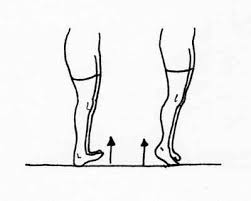
A dynamic exercise that improves ankle stability, lower limb strength, and balance is the toe-heel walk. To begin the exercise, take a few steps forward on your toes while maintaining an elevated heel and using your calf muscles.
Then, to engage the muscles along the front of your lower legs, switch and walk forward on your heels while raising your toes off the ground. This alternating action is very helpful for athletes, dancers, and those healing from lower limb injuries since it improves coordination and develops the calf and shin muscles.
Walking lunge:
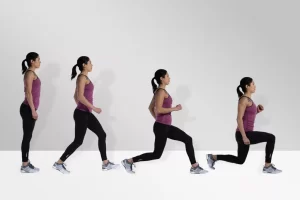
A dynamic variant of the classic lunge, walking lunges assist in increasing coordination, balance, and lower body strength. You should stand up straight. Walking lunges are an excellent full-leg exercise that tones the calves, quadriceps, hamstrings, and glutes. They are also a functional action that replicates daily activities.
Plyometrics:

Jump training, another name for plyometrics, is a high-intensity workout that uses explosive movements to increase agility, speed, and power. Jumping, bounding, and hopping are common workouts that include quick contractions and stretches of the muscles to improve their strength and reactivity.
Burpees, clap push-ups, box jumps, and jump squats are examples of common plyometric exercises. In athletic training, plyometrics are frequently used to enhance performance in sports like basketball, football, and track & field that call for strong, rapid movements. Plyometric exercises can also improve cardiovascular fitness and bone density if done correctly and with control.
Standing Calf Stretch:
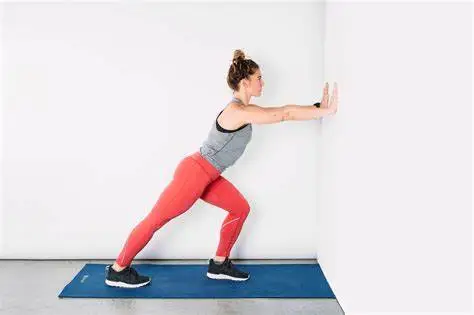
While standing, you may rapidly and efficiently perform calf muscle stretches, particularly for the gastrocnemius. Place your hands shoulder-height on a wall while standing facing it to complete this stretch. This stretch helps avoid lower leg and ankle problems, increases flexibility, and loosens up tense muscles.
Side Lunge:
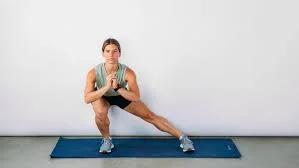
A lower-body exercise that works the hips, glutes, and inner and outer thighs while also enhancing flexibility and balance is the side lunge. Push your hips back as though you were sitting in a chair, and bend the stepping leg’s knee while maintaining the other leg straight. Side lunges are a great way to improve stability and lateral strength, which are sometimes lacking in conventional forward or backward motions.
Achilles Stretch:
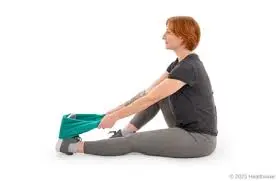
Exercises designed specifically to extend and relax the lower calf muscles and Achilles tendon are known as Achilles stretches. This stretch involves standing with your back to a wall and placing your hands shoulder-height against it. With the rear knee slightly bent and the heel flat on the ground, take a single step back. This stretch is particularly beneficial for reducing tension, increasing ankle flexibility, and avoiding ailments like Achilles tendonitis.
Conclusion:
To sum up, ankle mobility exercises at home are a practical and efficient method to increase joint stability, strength, and flexibility. Regularly doing exercises such as heel drops, toe-heel walks, dorsiflexion and plantar flexion, and ankle circles can improve lower limb function overall, reduce the risk of injury, and promote improved performance in daily activities and sports.
These easy at-home activities can greatly improve ankle health and mobility with regularity and appropriate form.
FAQs
Are ankles strengthened by walking in water?
By promoting early healing through water balance, lowering pressure over the joints, reducing pain and swelling, and enhancing strength, flexibility, and range of motion, aquatic treatment can benefit athletes with impairments caused by ankle sprains.
Why can’t I move my ankles?
Numerous causes can contribute to poor ankle mobility, but the most common ones include regular usage of high heels, ankle joint problems (or stiffness) after an accident, or a general lack of flexibility in the calf muscles.
Does riding a bicycle help with ankle injuries?
Pedaling’s circular action enhances blood circulation, which lowers swelling and aids in the healing process.
How can ankle mobility be improved?
Exercises that increase the ankle joint’s range of motion and flexibility should be the main emphasis of any ankle mobility improvement program. These workouts focus on dorsiflexion and plantar flexion and involve calf stretches and ankle circles. Stability and mobility can also be improved by strengthening exercises like toe lifts and heel walks.
Why do ankles become immobile?
Tight lower-leg tissues, such as the Achilles tendon or the calf muscles that move your ankle, are most frequently the cause of decreased ankle mobility.
Will your ankles get stronger as you walk?
Walking up and down hills can improve your cardiovascular fitness and help you develop stronger ankle, leg, and foot muscles, which will provide you with greater stability in your daily activities. Additionally, walking preserves bone density. Wolff’s law states that stress lines are where new bone is laid down.
How can I strengthen my ankle?
Keep going until it becomes uncomfortable or you are unable to slide it back any farther. After two seconds of holding this posture, carefully release it.
Why do I have so low ankle mobility?
Numerous causes can contribute to poor ankle mobility, but the most common ones include regular usage of high heels, ankle joint problems (or stiffness) after an accident, or a general lack of flexibility in the calf muscles.
What kind of exercise improves ankle mobility?
Ankle Circles
Underneath the front ankle, place a folded towel. Alternate between clockwise and counterclockwise rotations with your front foot.
References:
- Hecht, M. (2019, May 28). 12 Stretch and strength moves for ankle mobility. Healthline. https://www.healthline.com/health/ankle-mobility
- Inverarity, L., DO. (2024, May 18). Ankle strengthening exercises for ankle injuries. Verywell Health. https://www.verywellhealth.com/ankle-exercises-a-complete-guide-2696480
- Clinic, C. (2025e, June 17). How to strengthen your ankles. Cleveland Clinic. https://health.clevelandclinic.org/ankle-exercises-weak-ankles
- Heimlich, J. (1970c, January 1). Why You Should Care About Ankle Mobility—Plus 7 Exercises to Try. https://www.onepeloton.com/blog/ankle-mobility-exercises

